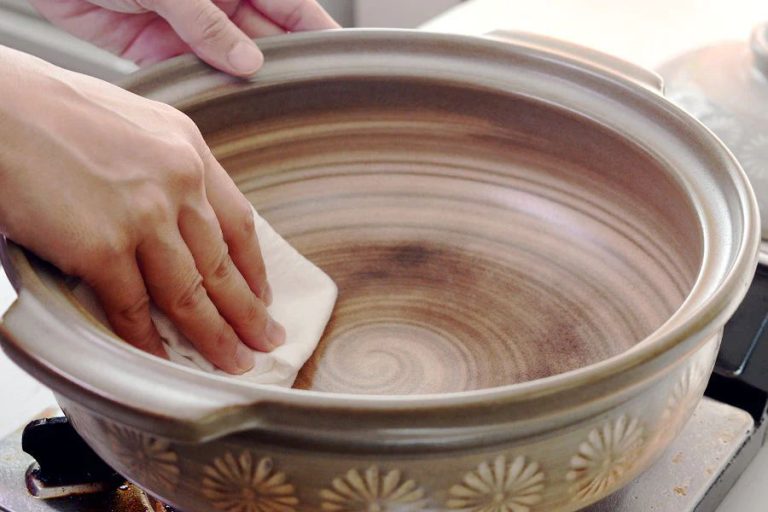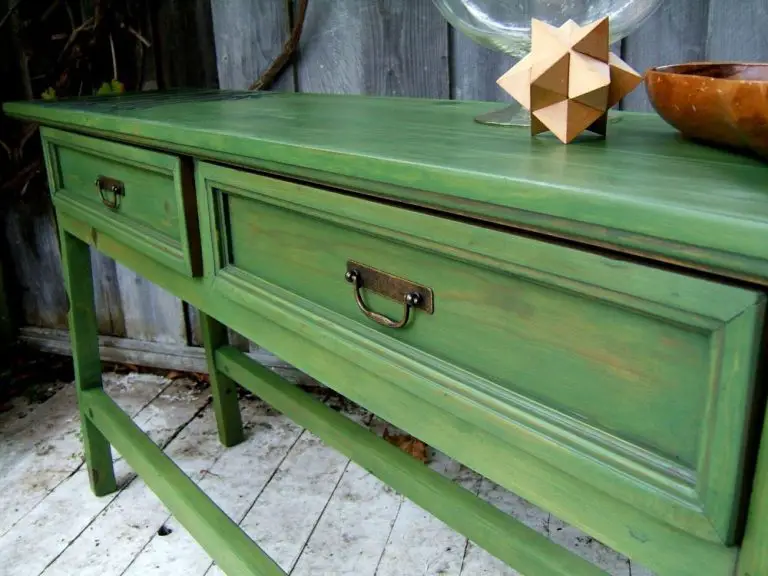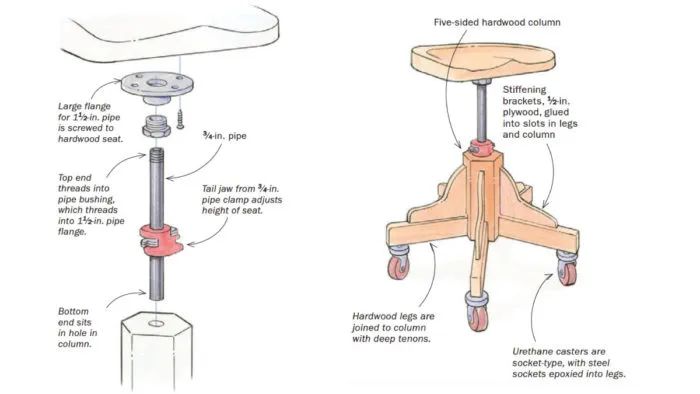What Can I Use To Seal The Inside Of A Terracotta Pot?
Sealing the inside of terracotta pots is an important step before using them for plants. Terracotta is porous and absorbs water, which can lead to your soil drying out more quickly. Sealing the interior helps waterproof the pot to keep moisture in. It also prevents minerals in some types of water from building up deposits inside the pot over time.
There are several common sealants used for terracotta pots. Varnish, polyurethane, epoxy resin, oil, beeswax, silicone caulk, and latex paint can all effectively seal the porous surface. Each has its own pros and cons to consider before applying.
Pros and Cons of Sealing Terracotta
Sealing the inside of terracotta pots has its advantages and disadvantages. Some of the key pros of sealing terracotta include:
- Helps Retain Moisture – Terracotta is porous and allows evaporation through the material. Sealing the inside helps keep more moisture in the soil and around plant roots.
- Prevents Leaking and Staining – Unsealed terracotta can leak through the base, leaving marks on surfaces. A good sealant will prevent leakage and stains.
However, there are also some potential drawbacks to keep in mind:
- Can Alter Natural Look – Sealants may change the natural terracotta color and finish. Varnishes often make the surface glossy.
Overall, sealing the inside can help terracotta function better as a plant pot. But it does involve some trade-offs in terms of altering the pot’s original appearance.
Sealants for Inside Terracotta Pots
There are several types of sealants that can be used on the inside of terracotta pots to help waterproof them:
Varnish/Polyurethane
Polyurethane is a common sealant used for finishing wood projects. It creates a plastic-like coating that is waterproof and durable. 2-3 coats of polyurethane varnish brushed on the inside of the pot will seal the porous terra cotta. Be sure to use an oil-based polyurethane, not a water-based one.
Epoxy Resin
Epoxy resin is another plastic-like sealant that is extremely waterproof. Mix a 2-part epoxy resin product and brush several coats on the inside of the pot. Epoxy will seal terracotta very effectively.
Oil or Beeswax
Food-safe plant oils like linseed oil, tung oil, or mineral oil can seal terra cotta. Also, rubbing beeswax on the interior and melting it in with a heat gun will penetrate and seal the clay. Reapply oil or beeswax once a year.
Silicone Caulk
Clear silicone caulk can be applied inside a terracotta pot to seal it. Run a smooth bead along the interior rim first. Then coat the bottom and sides with a paintbrush. Let the silicone cure fully before using the pot.
Latex Paint
Acrylic latex paint will function as a sealer for terra cotta pots. Brush at least 2 coats of water-based latex paint on the inside surfaces to seal them. Avoid glossy paint, as flat or satin latex paint will adhere best.
How to Apply Sealants
Applying sealants properly is key to getting the best results. Here are some tips:
First, make sure the inside of the terracotta pot is clean and completely dry before applying any sealant. Use soap and water to thoroughly clean the pot and rinse away any debris or dust. Allow the pot to air dry completely. Any moisture left inside can prevent the sealant from properly bonding.
Always follow the product instructions for applying the sealant. Pay attention to how many coats are recommended and how long to wait between coats. Using a foam brush or lint-free cloth, apply the sealant with smooth, even strokes. Make sure to cover the entire interior surface area.
It’s important to let the sealant fully cure before using the pot. This usually takes 1-3 days but check the product directions. Applying the sealant too thickly or not allowing enough cure time can result in peeling or flaking.
Sealing the inside of terracotta pots takes a little bit of time and patience but is worthwhile to protect plants from minerals in tap water and help maintain consistent soil moisture. Following these application tips will ensure the sealant adheres properly and lasts.
Varnish/Polyurethane Sealants
Varnish or polyurethane can be used to seal the inside of terracotta pots. These sealants are typically water-based, which allows them to penetrate the porous terra cotta material. Multiple thin coats are usually needed to fully seal the interior surface.
When using varnish or polyurethane, it’s important to consider the potential toxicity. Work in a well-ventilated area and allow ample drying time between coats. Water-based options tend to be lower in VOCs than oil-based versions. Opt for a sealant marketed as non-toxic when possible.
The main benefits of a varnish or polyurethane sealer are affordability and availability. Many homeowners already have these products on hand for wood finishing projects. They provide a clear, uniform seal on the rough terracotta surface. Just be aware that multiple coats are required for a complete moisture barrier, increasing drying time.
Epoxy Resin Sealants
Epoxy resin is an extremely durable sealant option for the inside of terracotta pots. When properly mixed and applied, the cured epoxy resin creates a tough, plastic-like coating that seals the porous terracotta material.
The biggest downside to epoxy resin is the cost. Epoxy resin kits can be expensive, especially for large projects. However, the sealing and protection provided by the cured resin is very long-lasting, so the extra cost may be worth it for a valuable pot.
It’s crucial to precisely mix the epoxy resin and hardener according to the manufacturer’s instructions, usually a 1:1 ratio by volume. Ensure proper curing by mixing the components thoroughly and applying the resin during the ideal temperature range. Failure to mix the epoxy properly can result in tacky spots and poor adhesion.
One advantage of epoxy resin is that you can recoat it after lightly sanding to renew the seal. This allows for occasional touch-ups over time. Overall, epoxy resin is the most durable option for sealing the inside of terracotta pots, providing a waterproof, chemical-resistant barrier.
Oil or Beeswax Sealants
Oil or beeswax are natural, non-toxic options for sealing the interior of terracotta pots. Food-grade mineral oil, coconut oil, olive oil, and melted beeswax can be brushed on the inside surfaces to create a protective barrier. The main advantage of oil or wax is that they are plant and environmentally safe.
The downside is that multiple coats are required, and it may need to be reapplied every year or so. Unlike synthetic sealants, plant-based oils can go rancid over time and should be monitored. The seal may also become gummy in hot weather. Proper curing is important to prevent stickiness.
Oils and waxes allow the clay to continue breathing, so they will not trap moisture like some other sealants. This makes them a good choice for a natural finish. Just be prepared to reapply on occasion for continued protection.
Silicone Caulk Sealants
Another sealant option for the inside of terracotta pots is silicone caulk. Silicone caulk creates a flexible, waterproof barrier that can protect the porous terra cotta material from moisture damage. When applied properly and given time to cure, silicone caulk forms a durable seal that is also safe for plants.
It’s important to follow the manufacturer’s instructions for cure time when using silicone caulk. This can vary based on humidity and temperature, but often takes 24-48 hours. Rushing this curing process can result in a seal that is not fully waterproof. Patience is key.
One downside of silicone caulk is that it gives off strong fumes as it cures. Use silicone caulk sealants only in well ventilated areas. The fumes can be unpleasant and irritating during the curing process. Once fully cured and dried, however, silicone caulk is inert and no longer emits fumes or odors.
With proper application and curing time, silicone caulk can be an effective sealer for the inside of terracotta pots. Its flexibility and waterproofing abilities make it a good choice. Just be sure to use it in a well-ventilated area and allow full cure time before exposing it to moisture.
Latex Paint Sealants
Another option for sealing the inside of terracotta pots is latex paint. Latex paint is widely available, affordable, and easy to apply. When using latex paint, it’s important to note:
– Multiple coats may be needed for proper sealing. Applying just one coat of latex paint may not fully seal the porous terracotta material. Two or even three coats ensures the paint fully penetrates and seals the pot.
– Allow proper drying time between coats. Latex paint needs sufficient time to dry and cure before adding an additional coat. Follow the manufacturer’s instructions for recoat times.
– The paint can scratch or peel over time. Latex paint provides a thin, flexible seal that can get scratched by potting tools or plants rubbing against it. The seal may also peel or chip off if struck hard enough.
Overall, latex paint is a convenient sealing option for terracotta’s interior. Just be prepared to apply multiple coats and allow proper drying time for the most durable seal.
Conclusion
Sealing the inside of terracotta pots can provide several benefits, such as preventing moisture evaporation, limiting salt and mineral buildup, and allowing pots to hold water. However, sealing also has some drawbacks to consider, like potentially restricting airflow to plant roots and difficulty assessing soil moisture.
For most situations, I recommend using a food-safe sealant like beeswax or a plant-safe epoxy resin. Beeswax provides a natural moisture barrier that still allows some airflow. Epoxy resins offer a durable seal and wide range of color options. Both can be easily applied by brushing on the interior surface.
Varnishes and polyurethanes also seal effectively, but may contain harmful fumes during application. Silicone caulk is easy to apply but can be difficult to fully remove later. Latex paints work in a pinch but tend to peel over time. Test any sealant on a small area first to ensure it adheres properly.
With the right sealant and application method, you can waterproof the inside of terra cotta while still allowing plants to thrive. Focus on food-safe, plant-friendly options for reliable and effective results.





